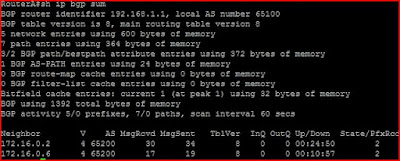Ospf is a link state protocols not a distance vector
Link State Routing Protocols they have two types
- IS-IS
- OSPF
Link state maintain 3 tables
- Topology table
- Neighbor table
- Routing table
· Send Triggered updates to announce Network Changes
· Send Periodic Updates (LS Refresh) on long intervals
· Use Dijkstra’s shortest path first (SPF) a logarithm
The difference between the link state protocols and Distance Vector
linkstate protocols It knows anything inside his neighbor and also the neighbor that connected to his neighbor, all area and in the physical interfaces in terms of routing information. Like hello packet, LSA(linkstate Advertisement) DBD (database description)packet.
Unlike Distance Vector – it only knows what is already connected to his interfaces in his neighbor not the other interfaces in his neighbor.
OSPF- They know the road map information in entire area
UNDERSTANDING OSPF NEIGHBOR RELATIONSHIP
1. Determine your own router-id
The router id is the router’s name in the ospf process, (your highest IP address physical ip address or loopback if there is a loopback but if there is no automatically using the highest physical ip address)
when ospf starts using a loopback(loopbacks beat the physical interfaces) so the router-id or a router’s name is the loopback ip address.
2. Add interfaces to the link state database(Dictated by the network command)
3. Send hello message on chosen Interface
Once every 30 sec on NBMA Networks
Once every 10 sec on broadcast / p2p network
Contains all sorts of information
Like:
Router id neighbors hello and dead timers
Area id network mask dr/bdr ip address
Authentication password
4. Received hello packets
*check hello /dead interval
*check network masks
*check area ID
*check authentication password
5. Send reply hello
If im listed as a neighbor in your hello packet
If yes, reset dead timer
In no, add as new neighbor
6. Master and slave relationship determined
Router1------------------------------Router2
· Determined by priority, router-id will breaks tie
· Master sends database descrioption(DBD) packet called = cliffnotes
· Slave sends its DBD packets
7. DBD are knowledge and reviewed
· LSR- link state request(slave requests details)
· LSU-link state updates(master send an updates)
· LSR(master request for details)
· LSU(slave send an updates)
8. Neighbors are synchronized “this is a full state”
DOWN STATE > INIT STATE > 2WAYS STATE> 3-WAY STATE > LOADING STATE>FULL STATE
MORE EXPLANATION JUST CHECKED IT OUT ALWAYS
NOW THIS IS THE TIME TO RUN THE DIJKSTRA SPF ALGORITHM TO FIGURE OUT WHAT TO DO WITH ALL THIS DATA
OSPF COST
Ospf using a cost not a metric for bandwidth
Formula:
Cost = 100/BW-IN-MBPS
Common costs
56k = 1785
64k = 1562
T1(1.544) = 65
E1(2.048)= 48
Ethernet = 10
Fast Ethernet= 1
Gigabit Ethernet =1
This blog is more about Design analyzing Configuring how it function Using a Cisco and windows Network.
Sunday, July 5, 2009
OSPF design and concept
Monday, April 6, 2009
BRGP Route-Map using Redistribution
This Design of BGP and concept is about configuration using BGP route-map and redistribution with OSPF
This is from http://www.packetlife.net website. ill try to configure example of Jeremy Stretch.
Here is the design and configuration. 3 router with BGP and OSPF. using 7200 ios. using GNS3














i will post again the explanation of this.how it function.
Subscribe to:
Comments (Atom)